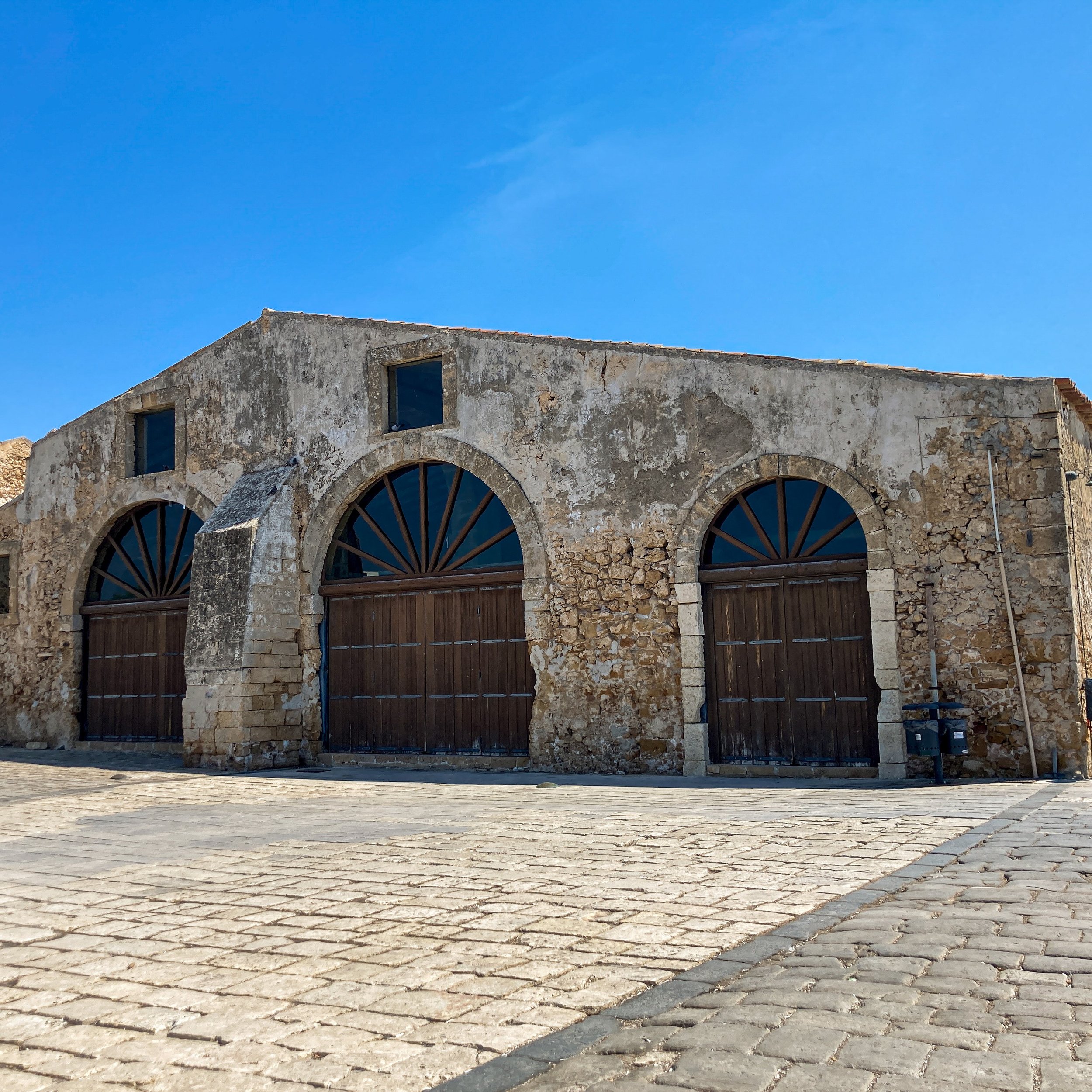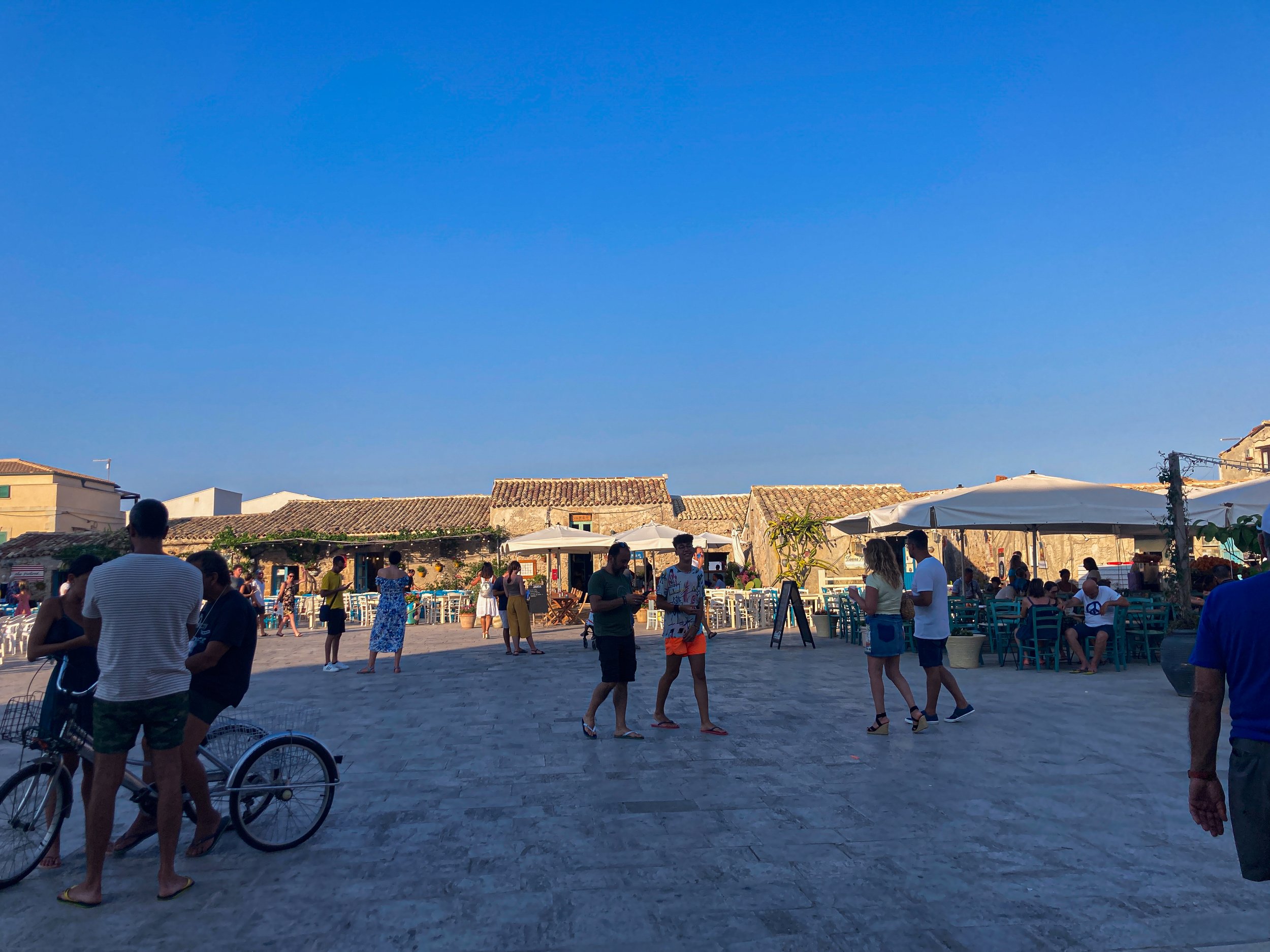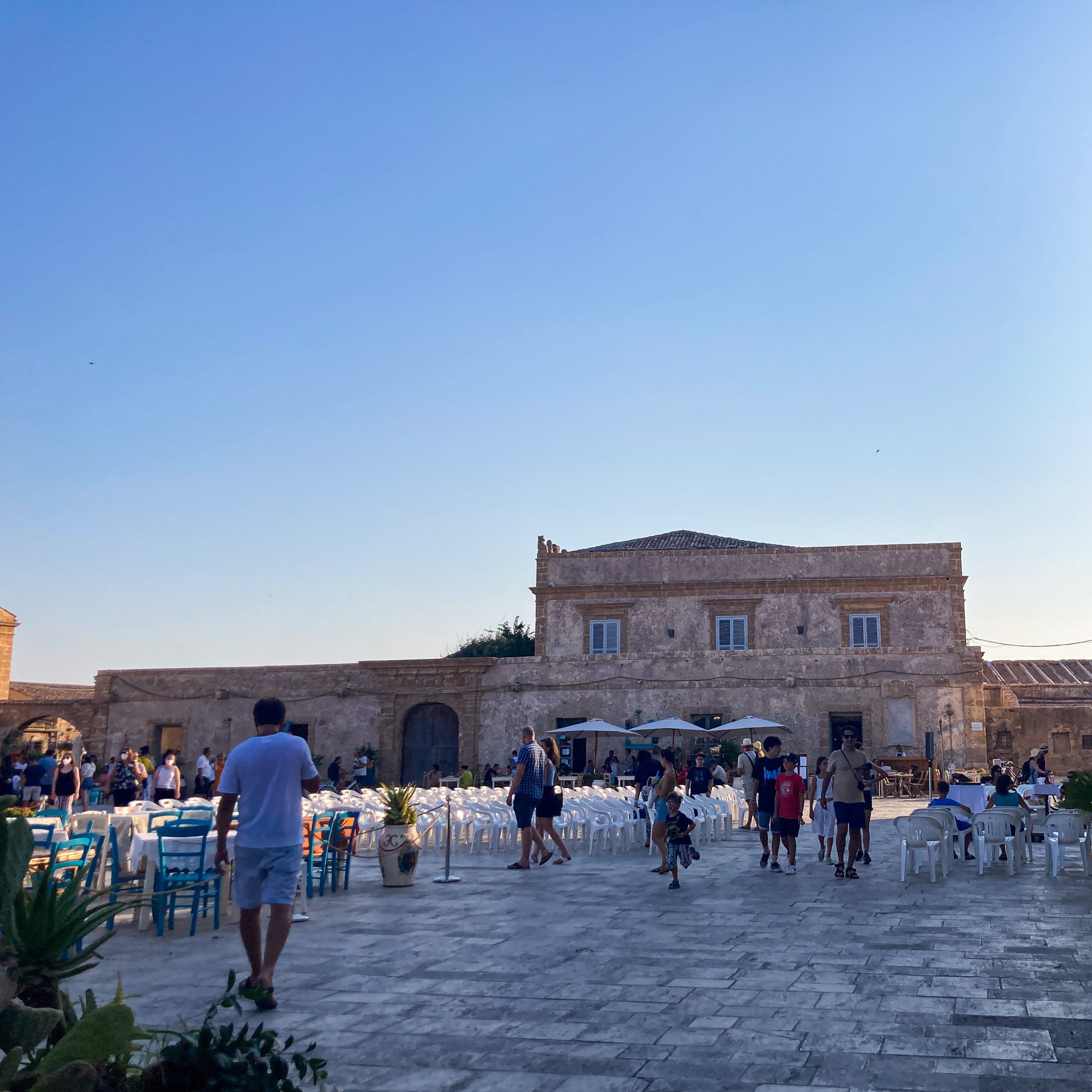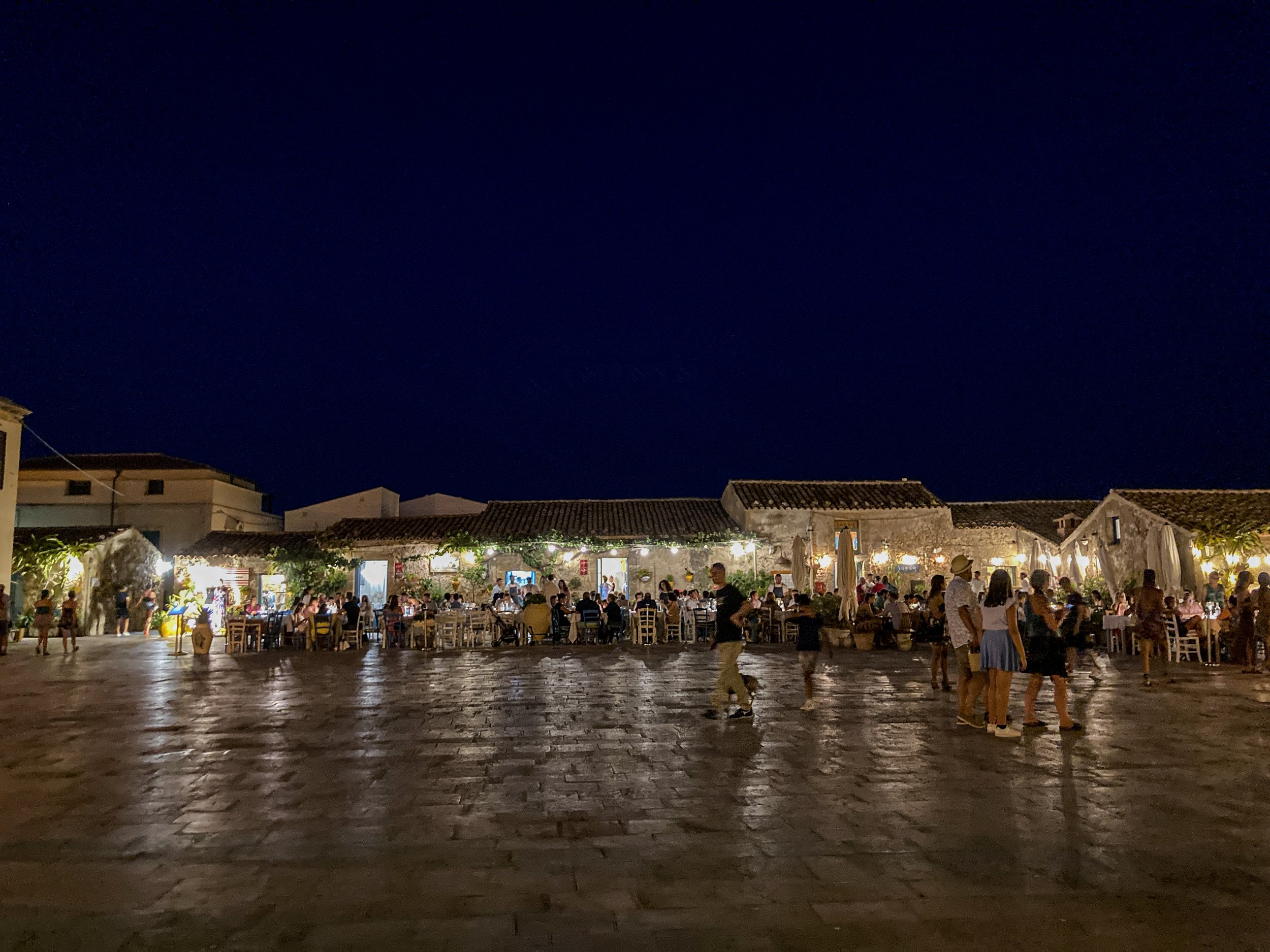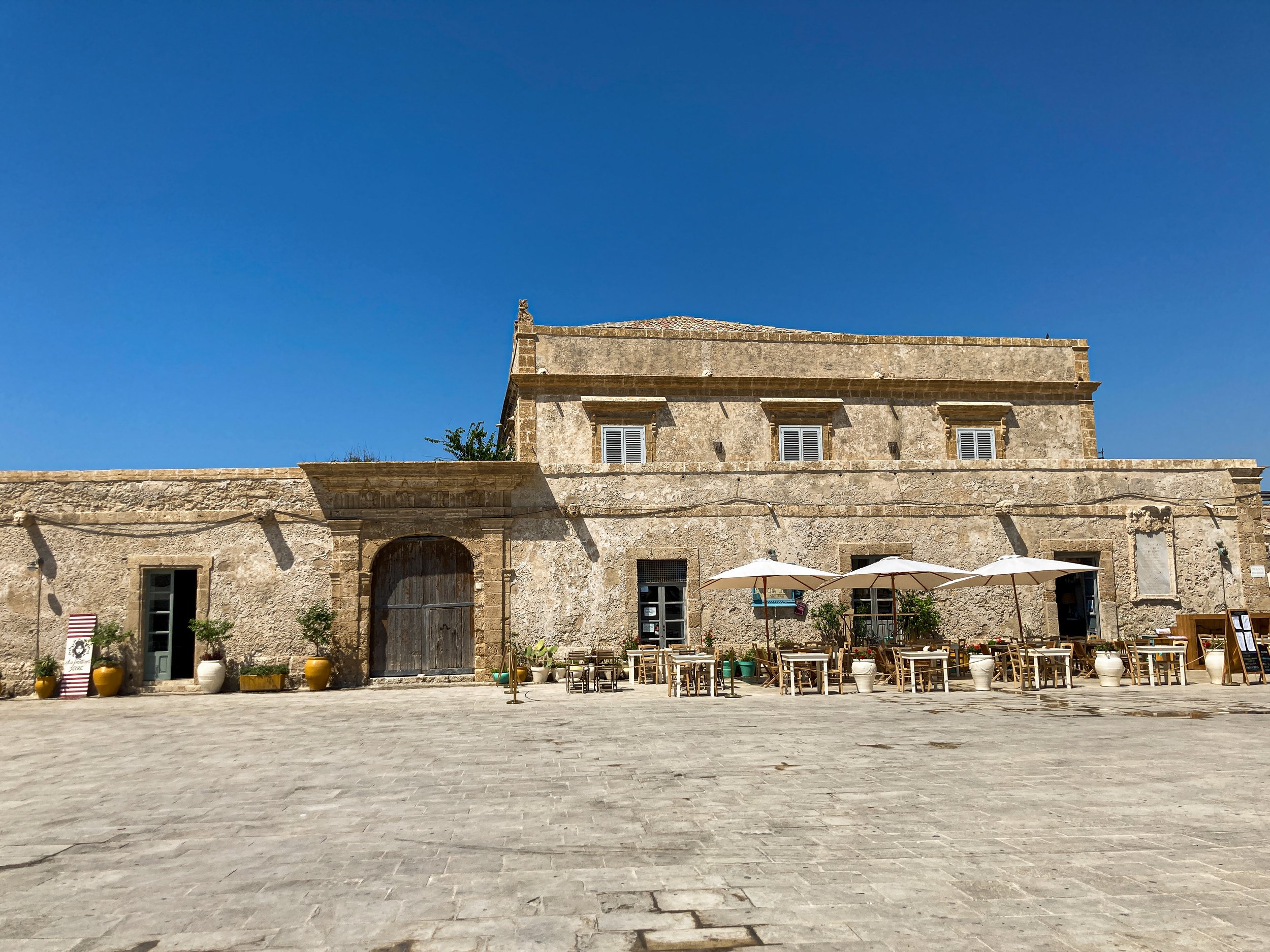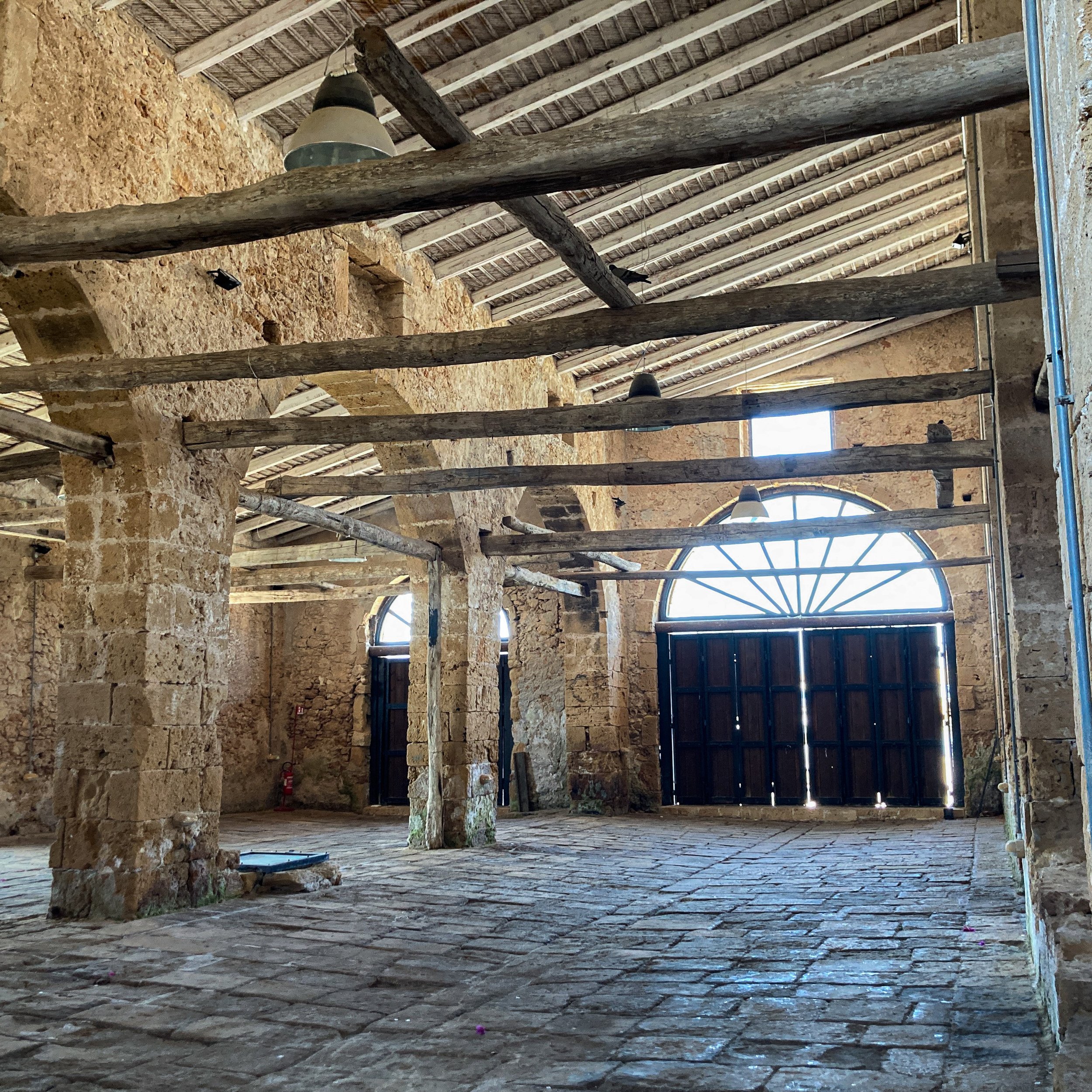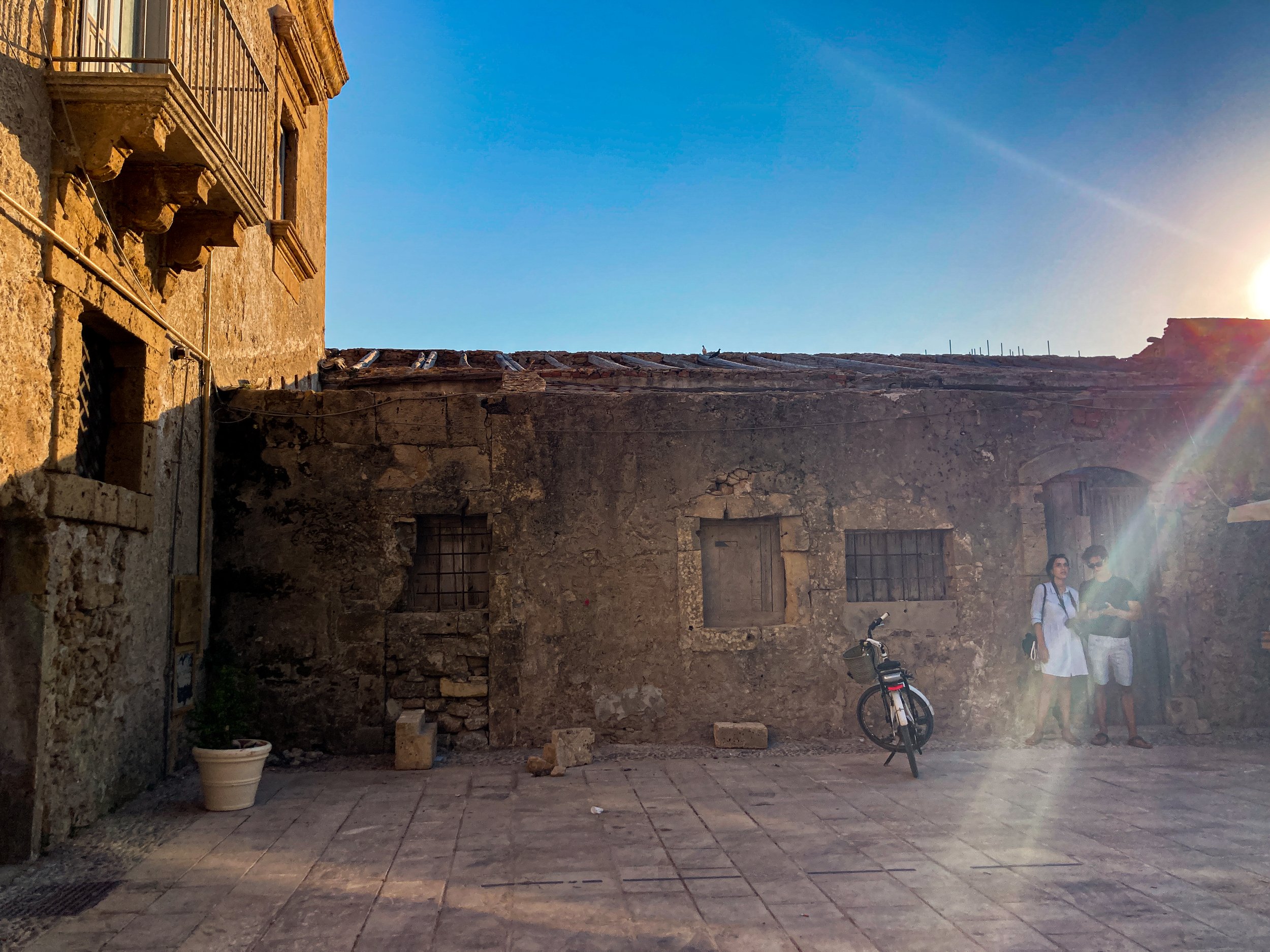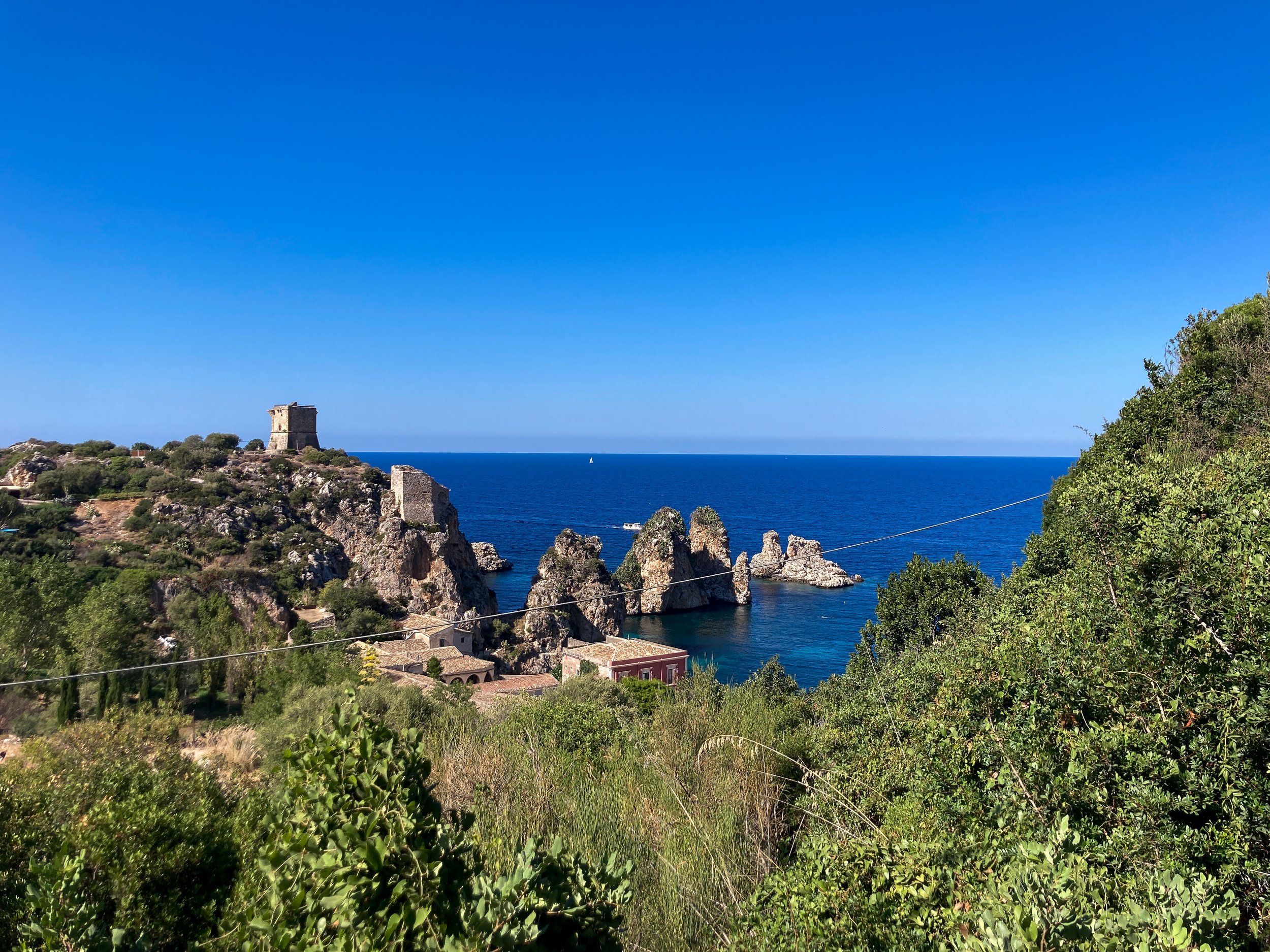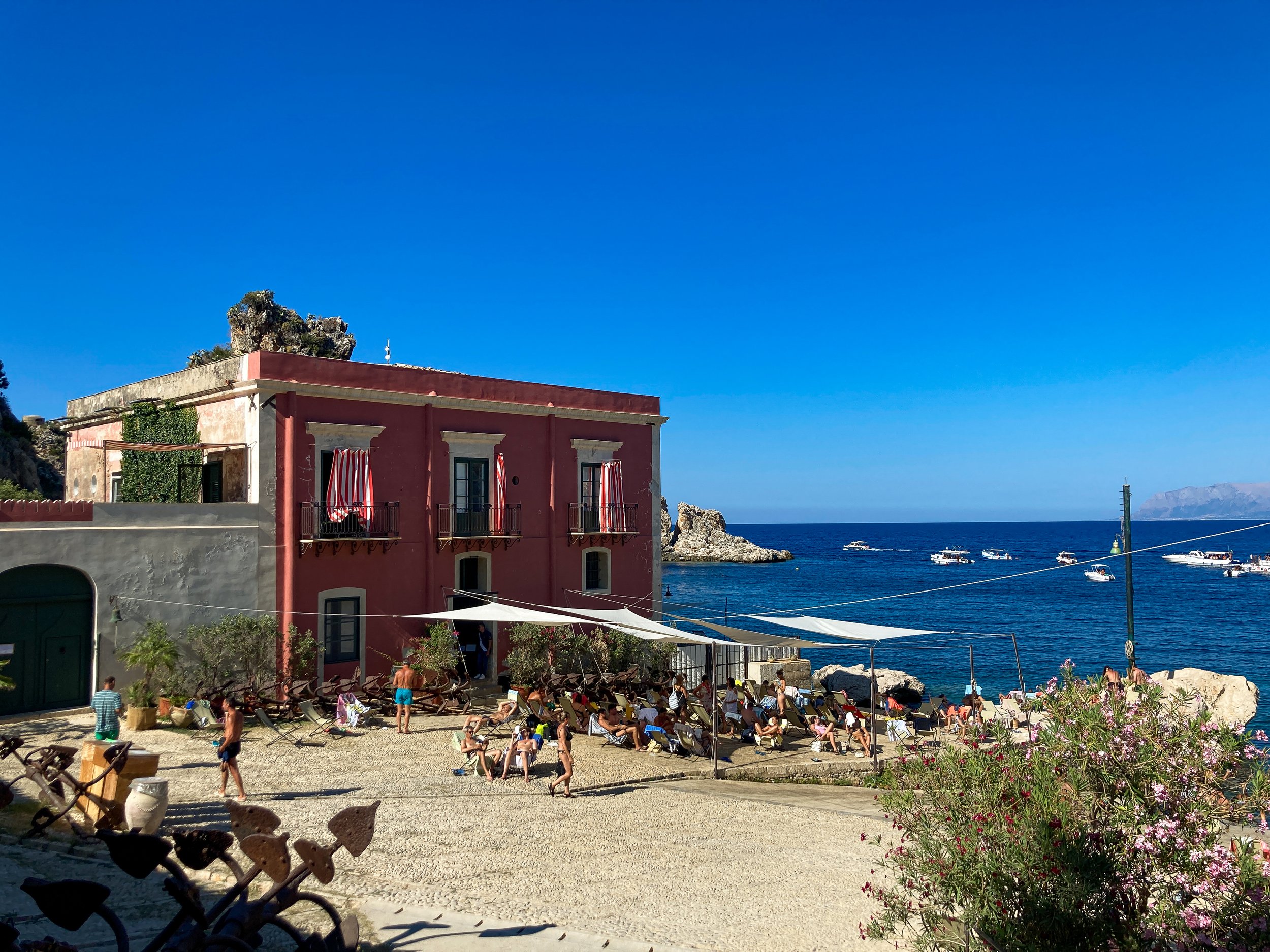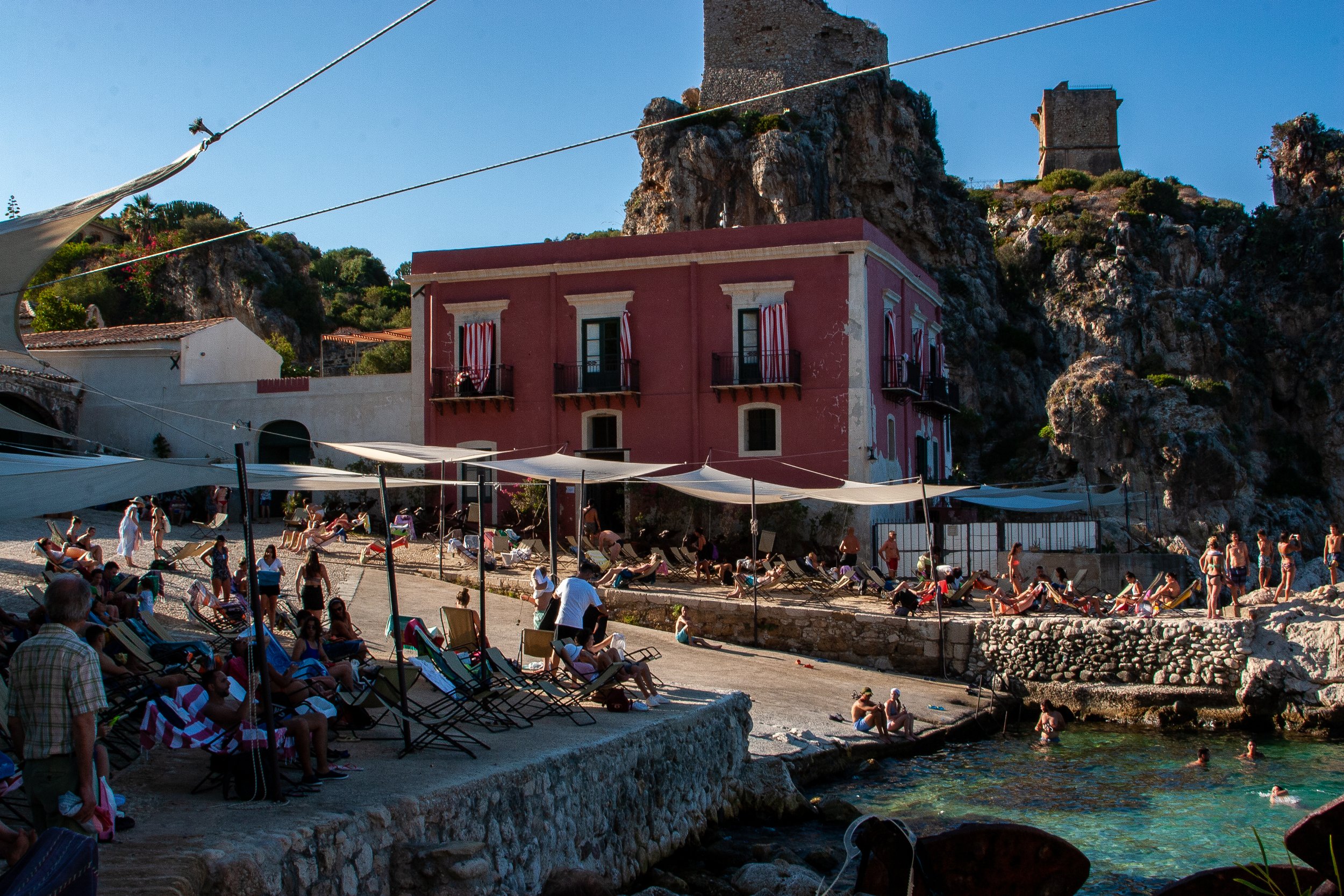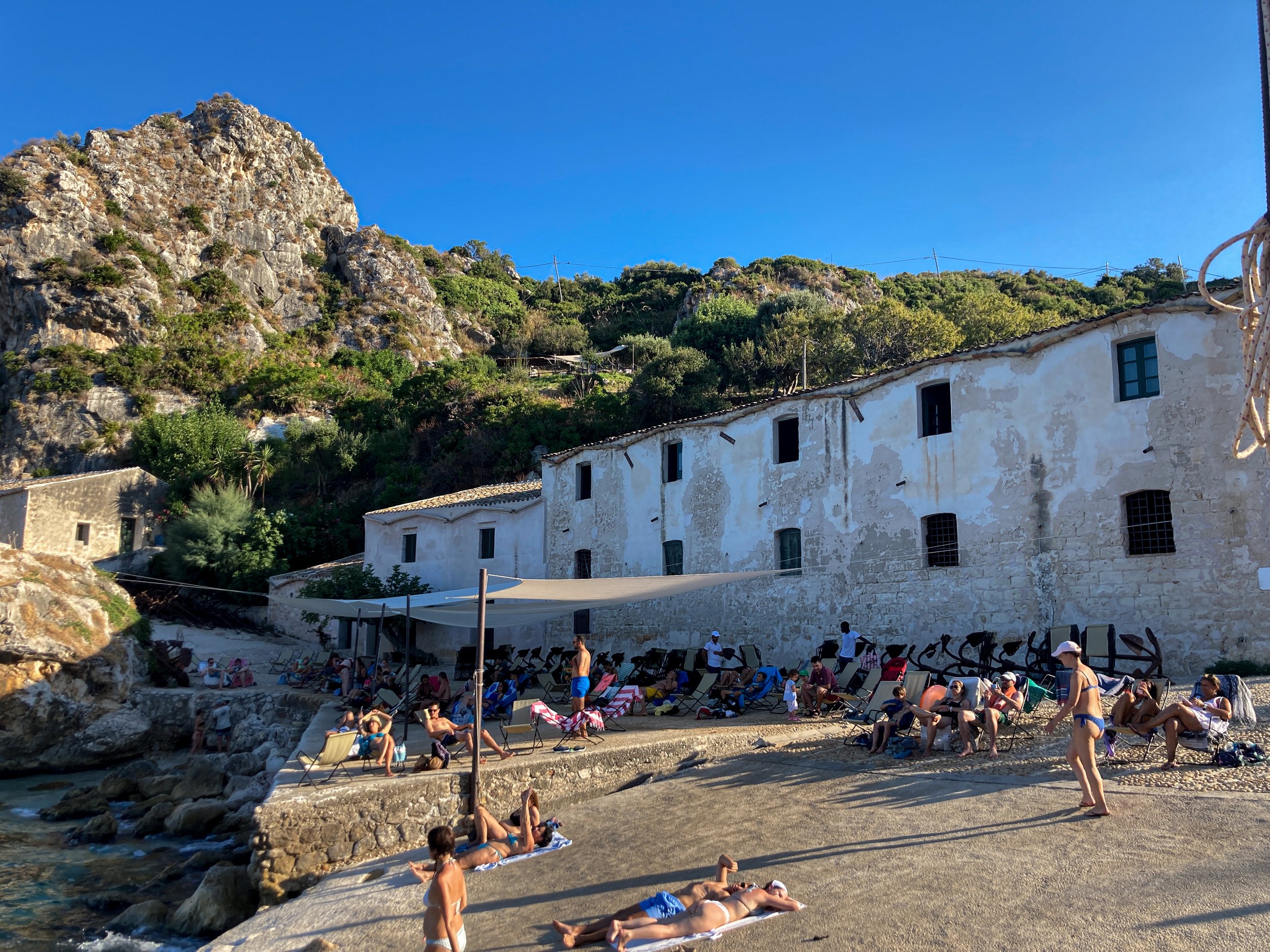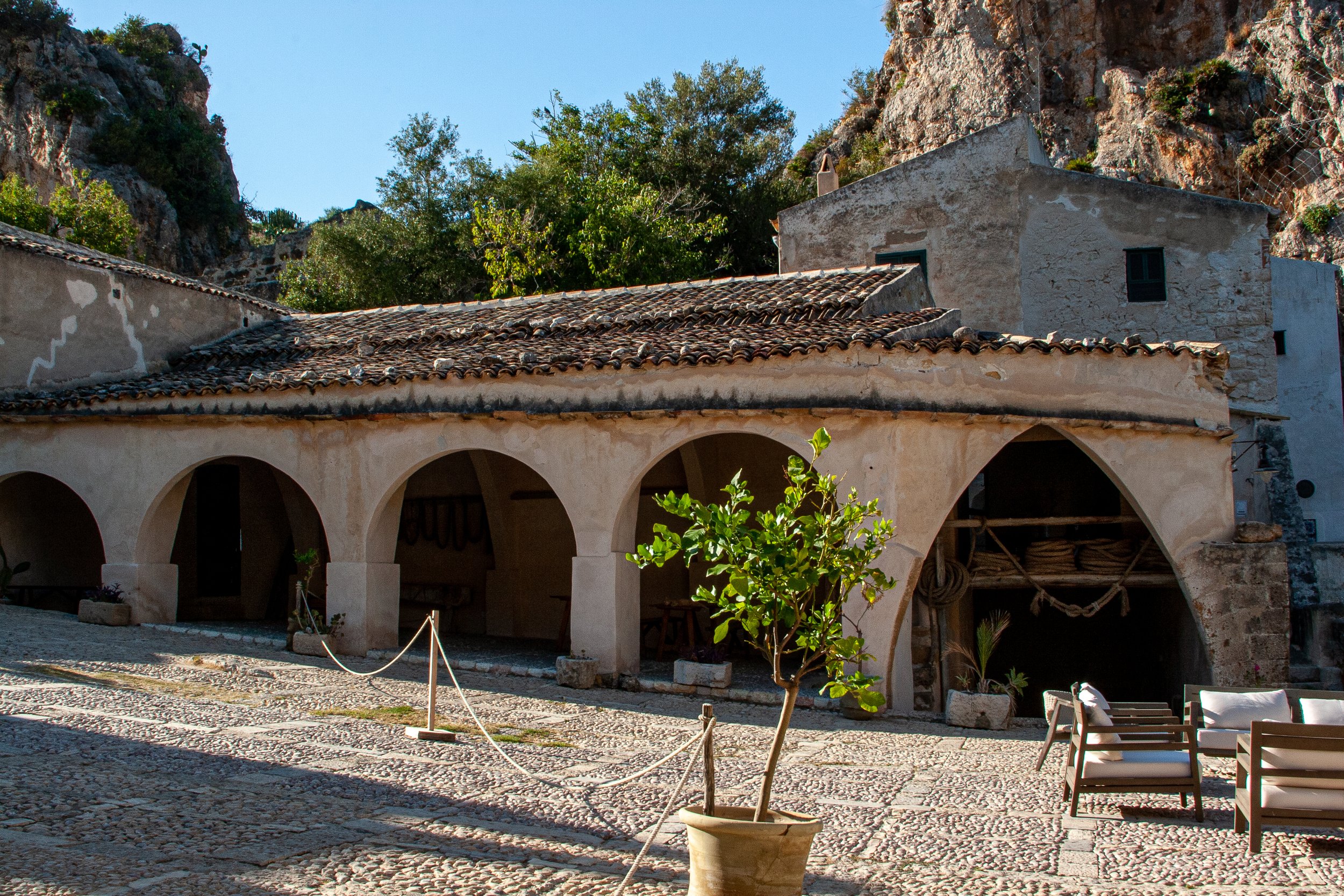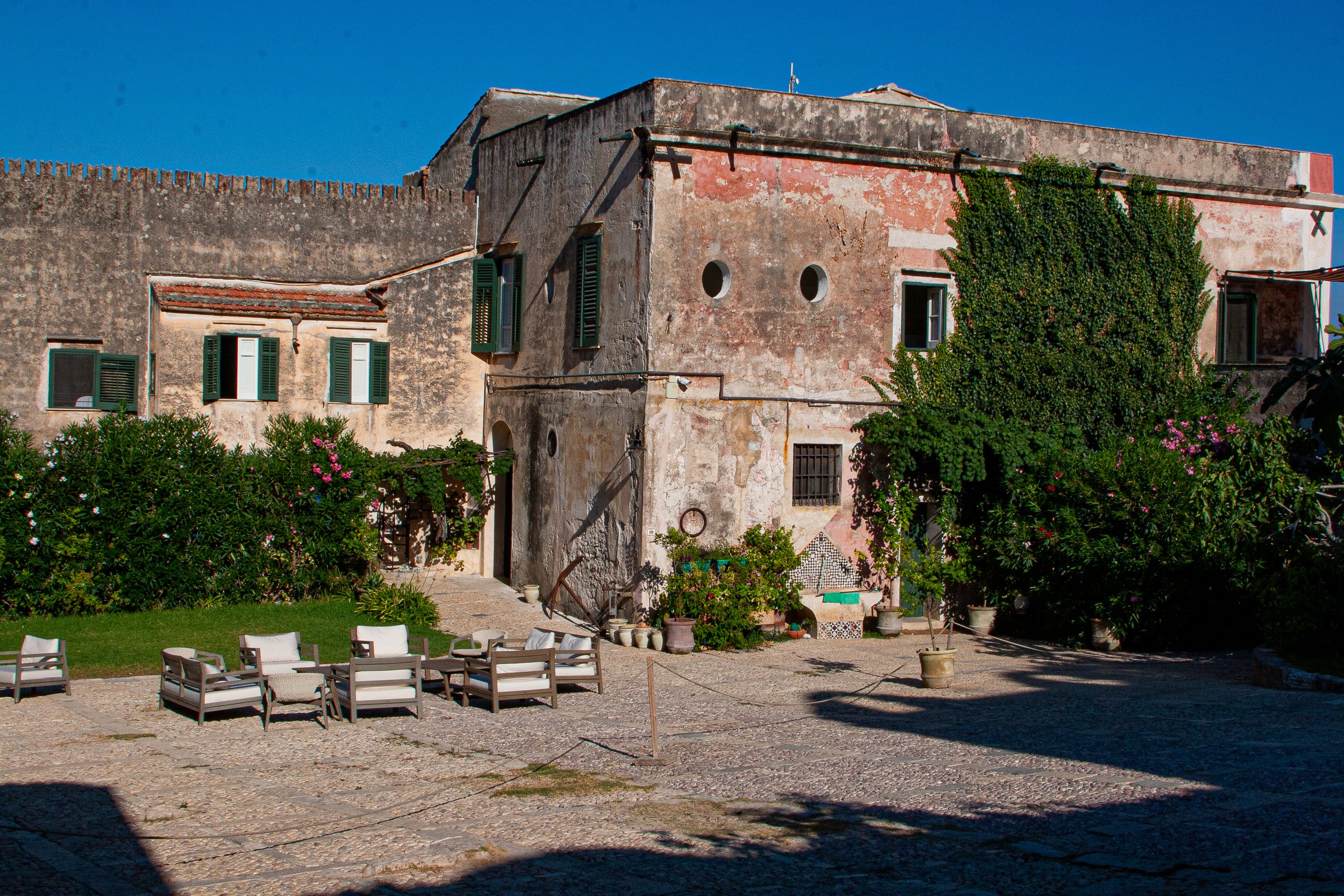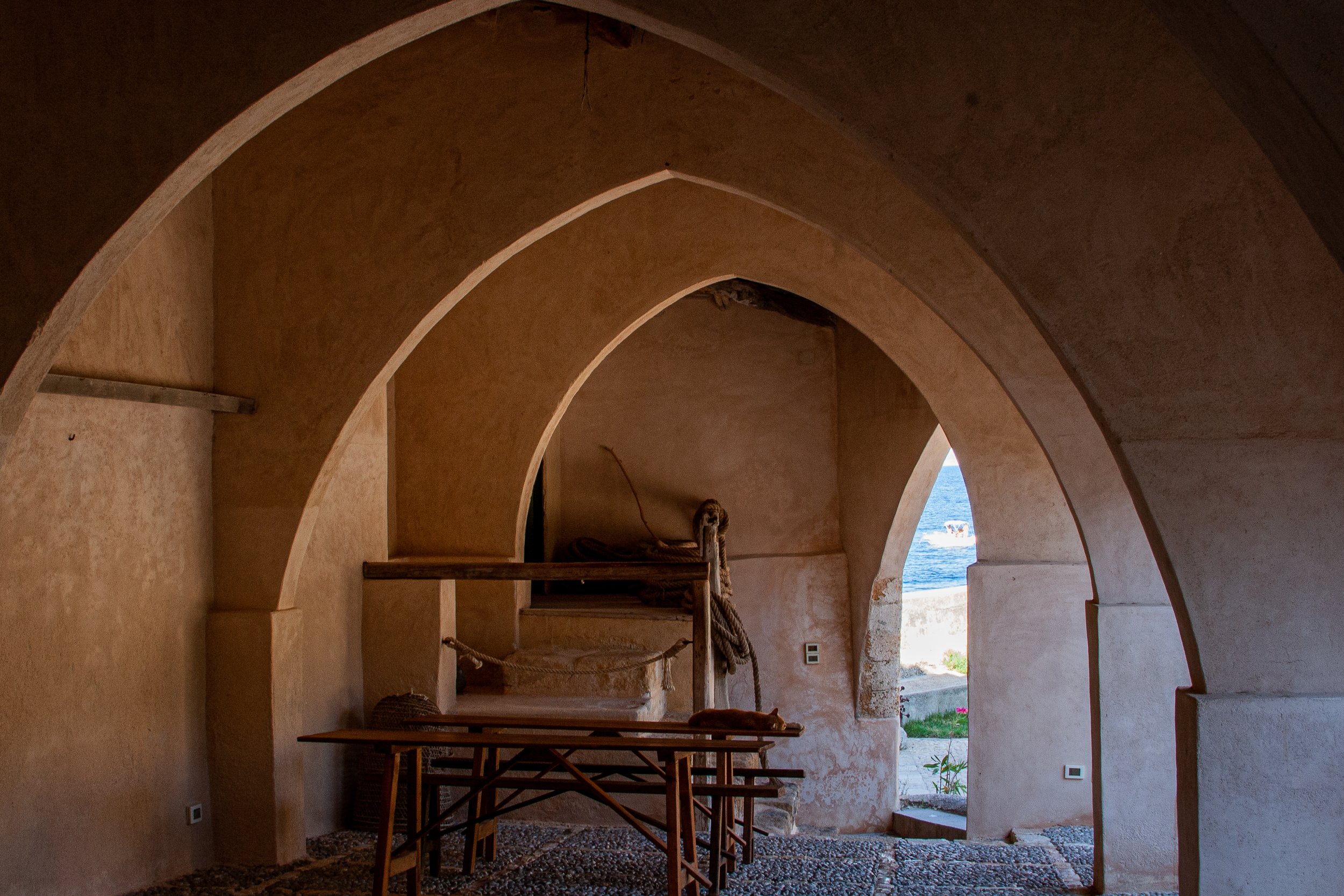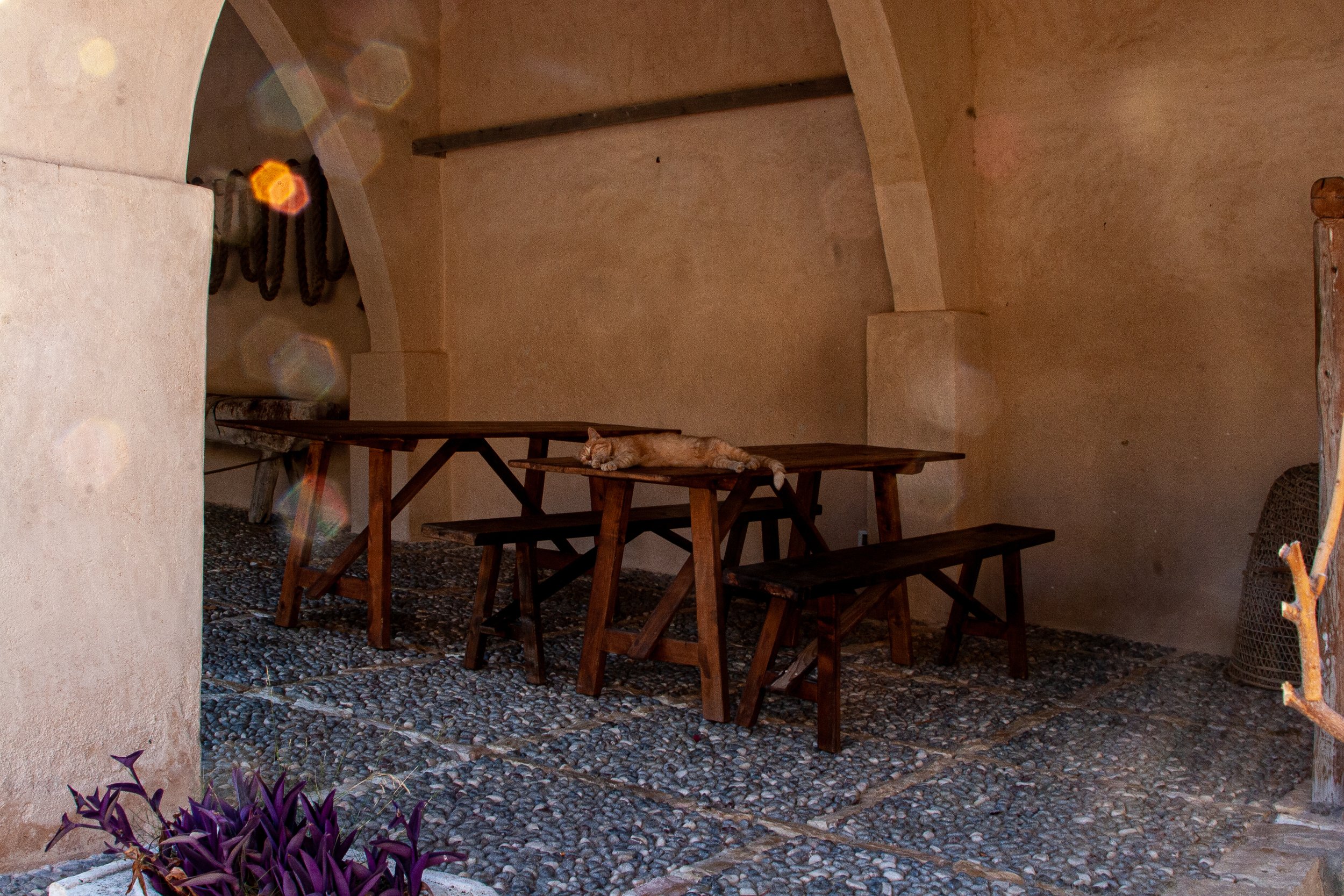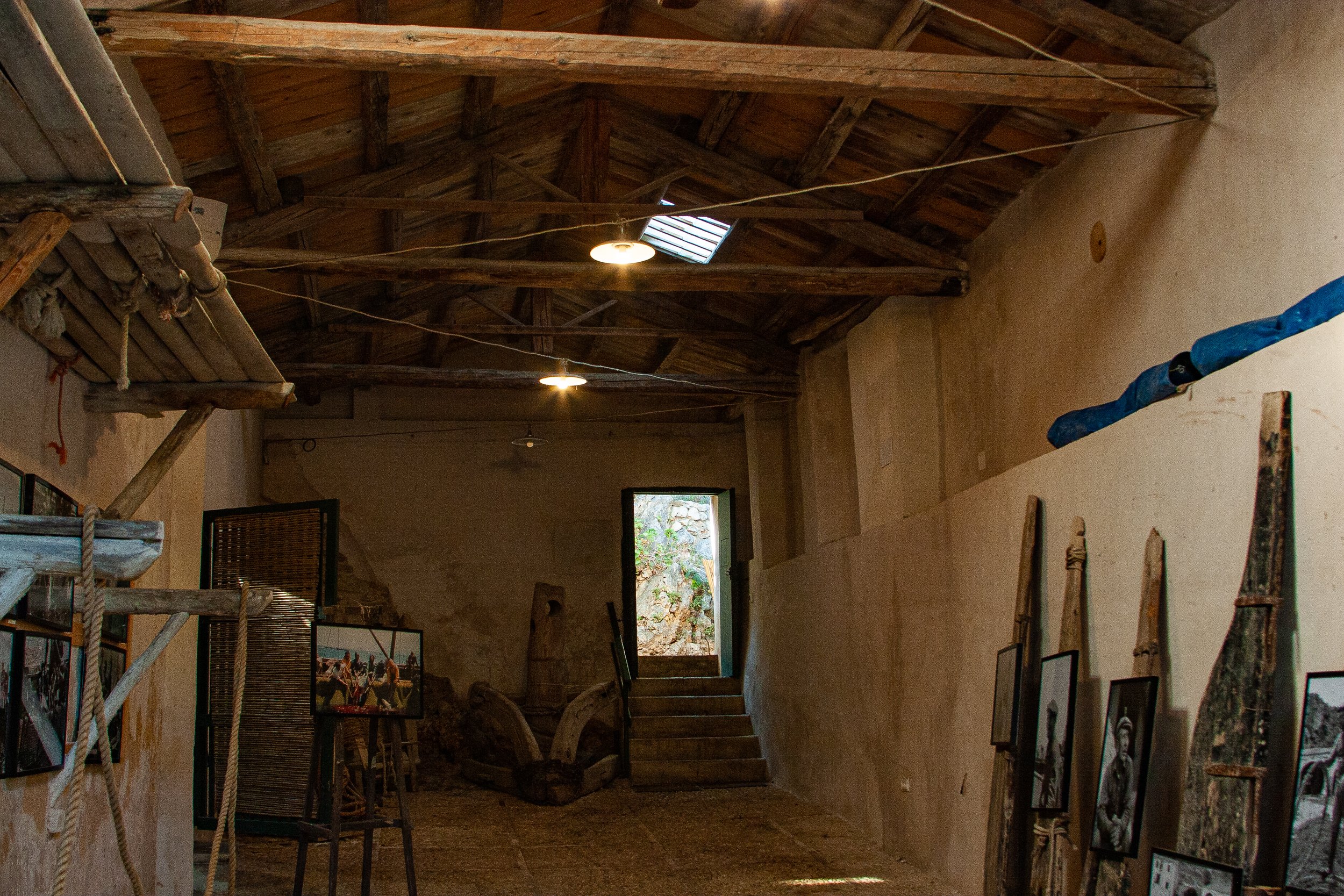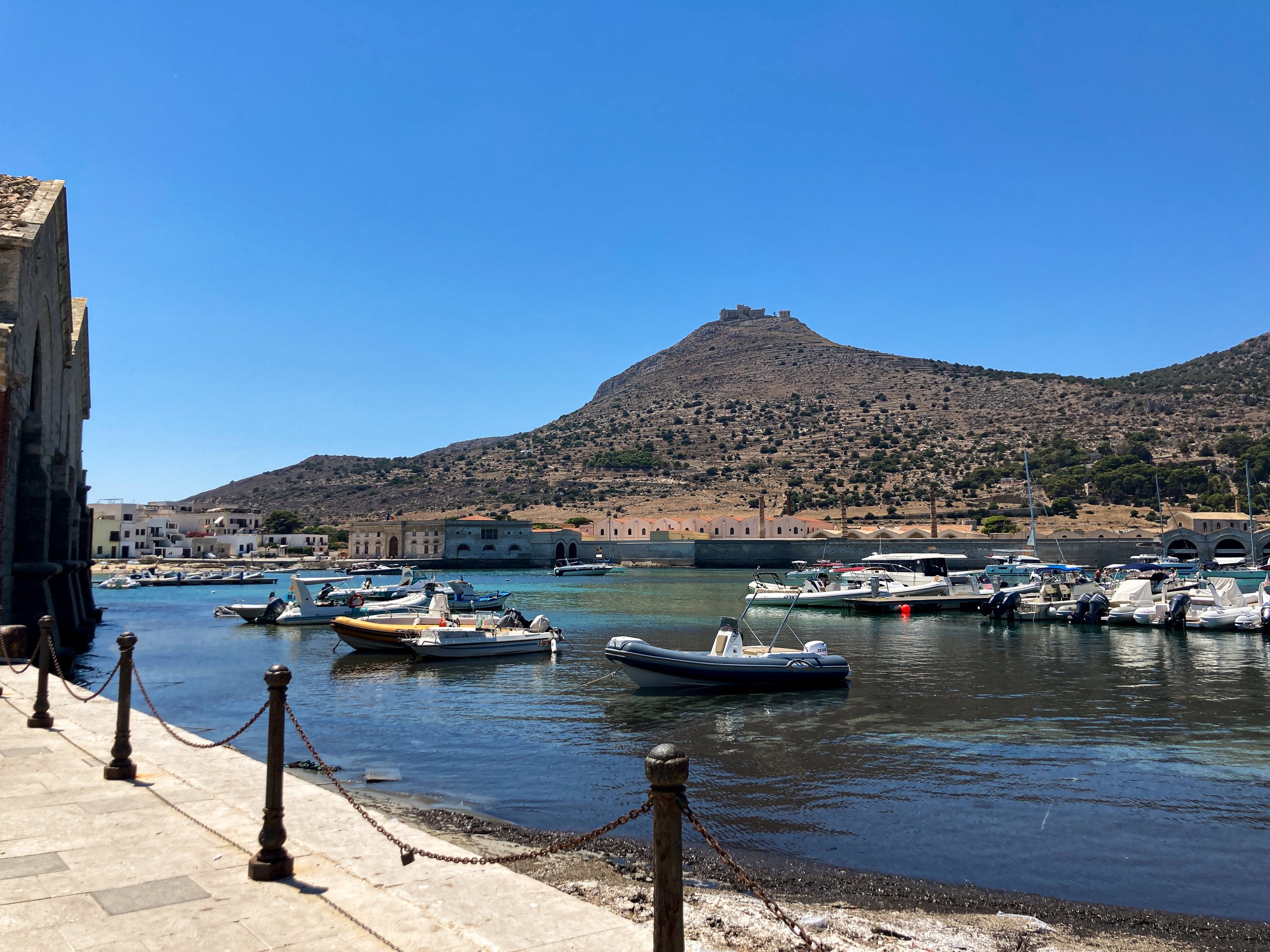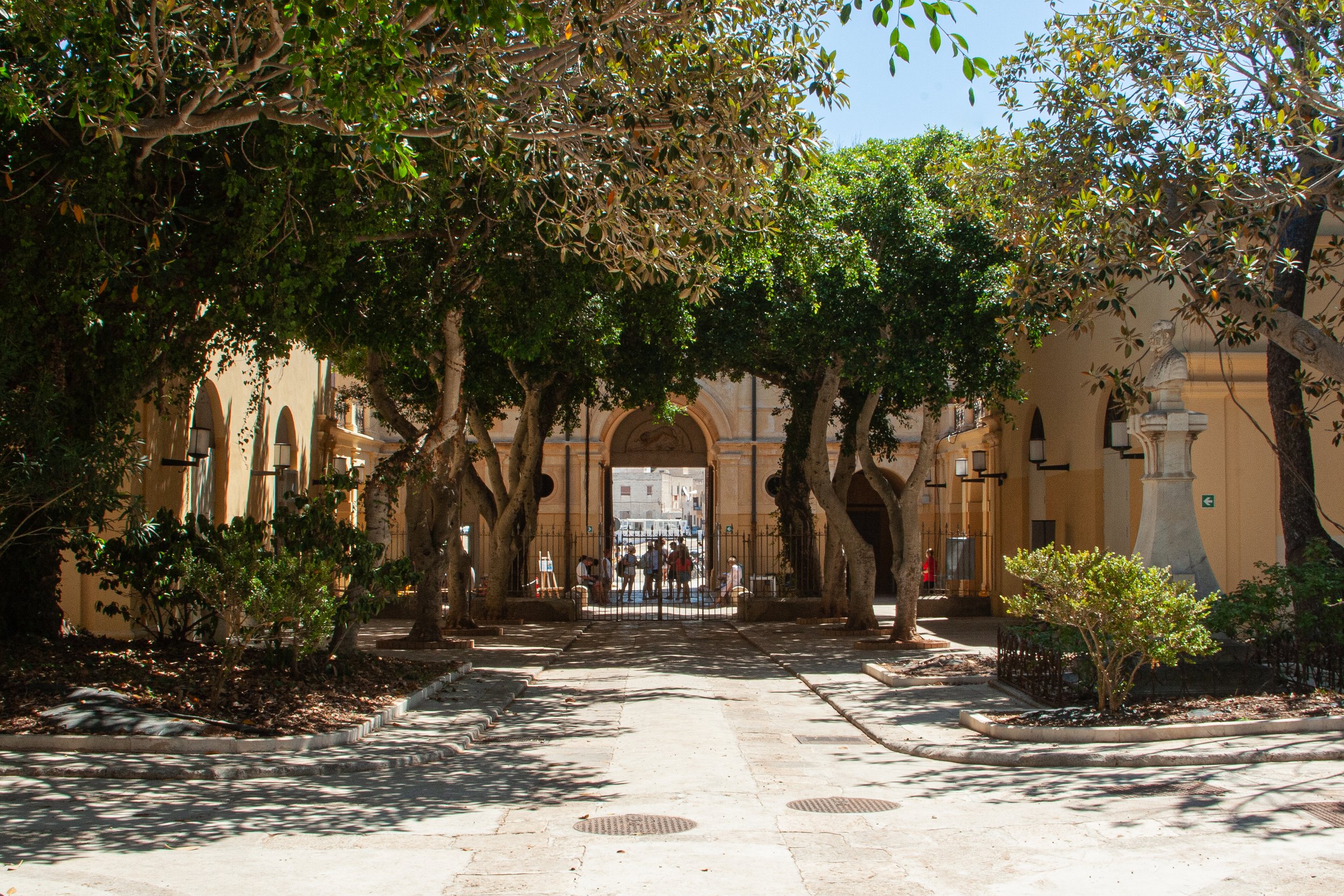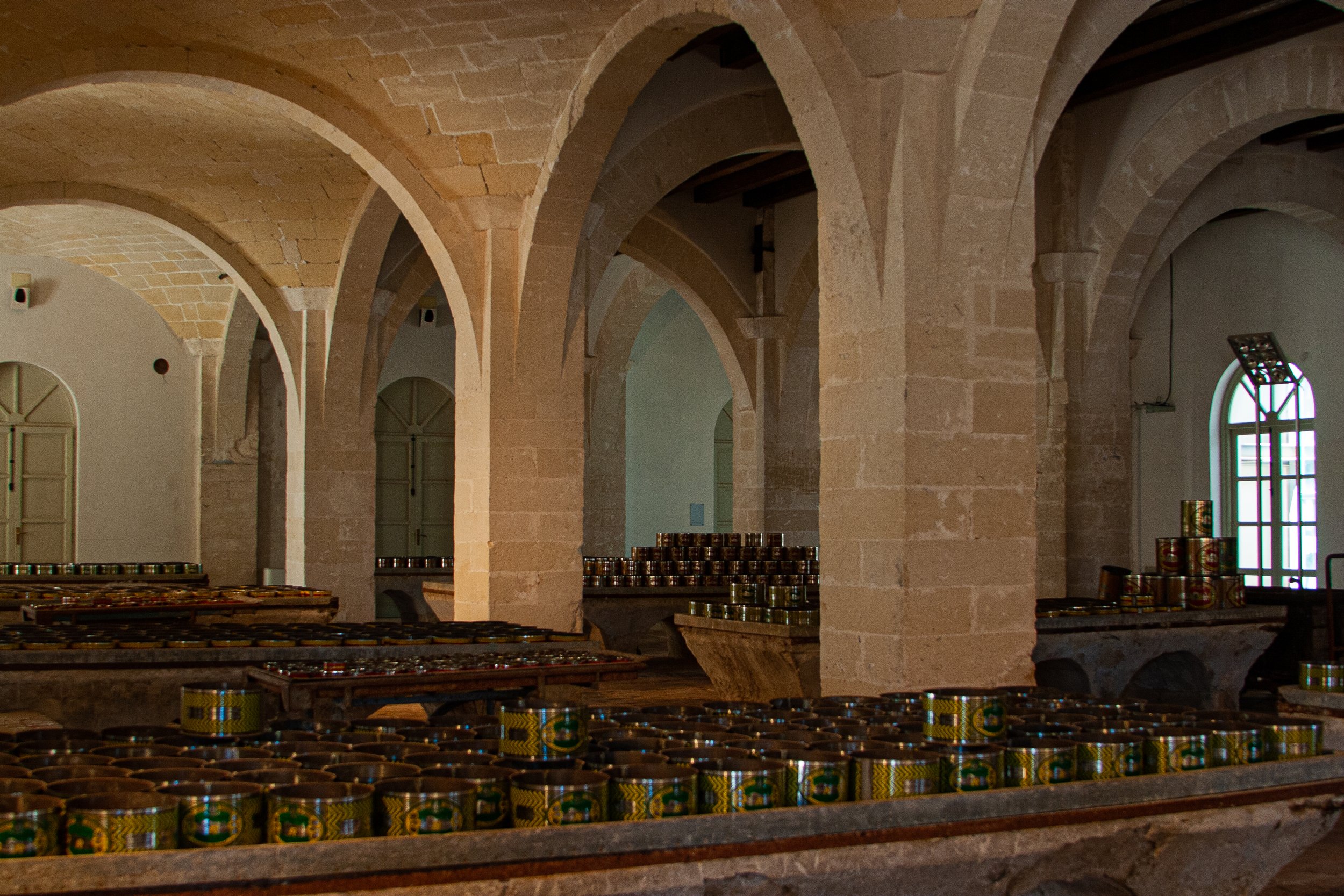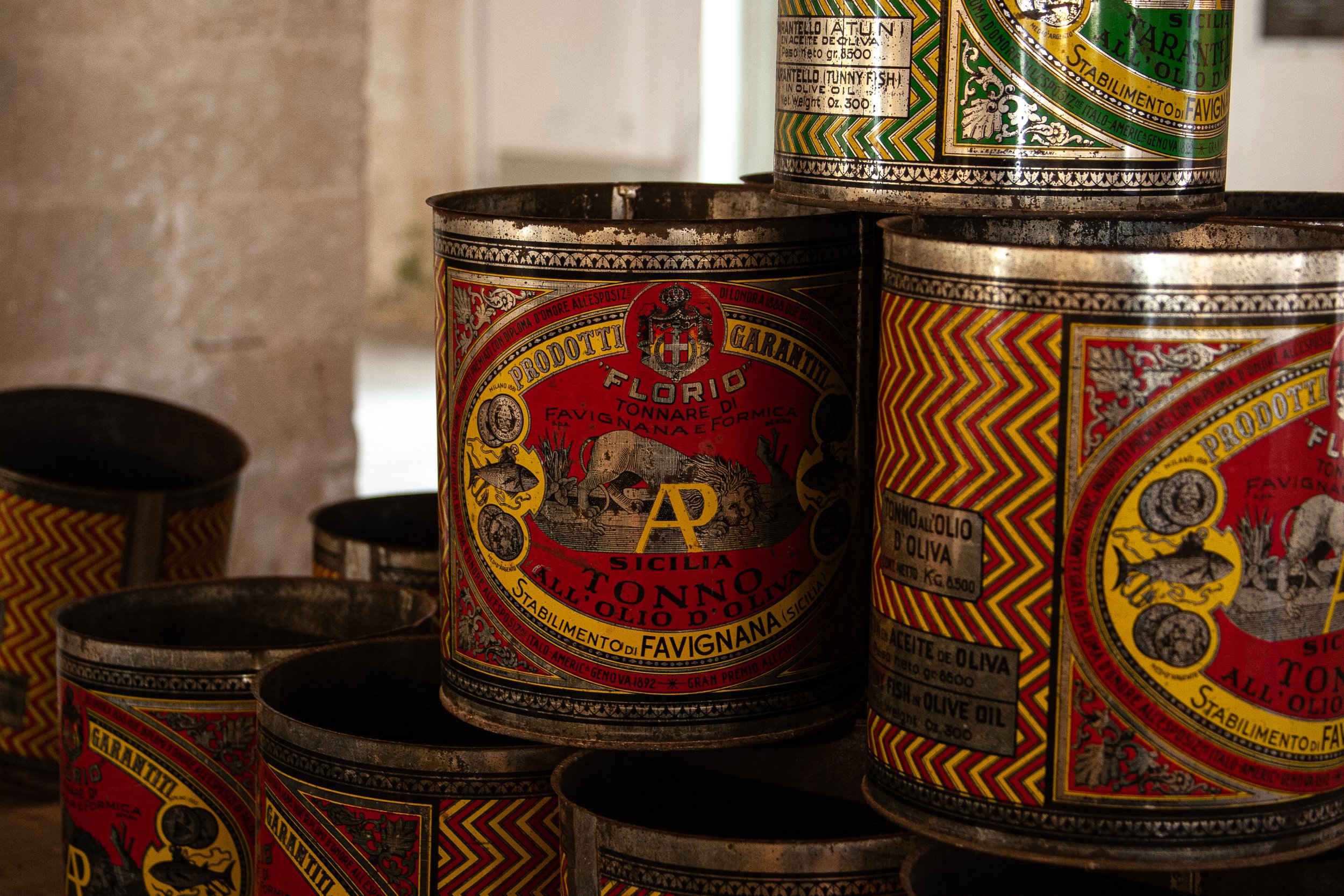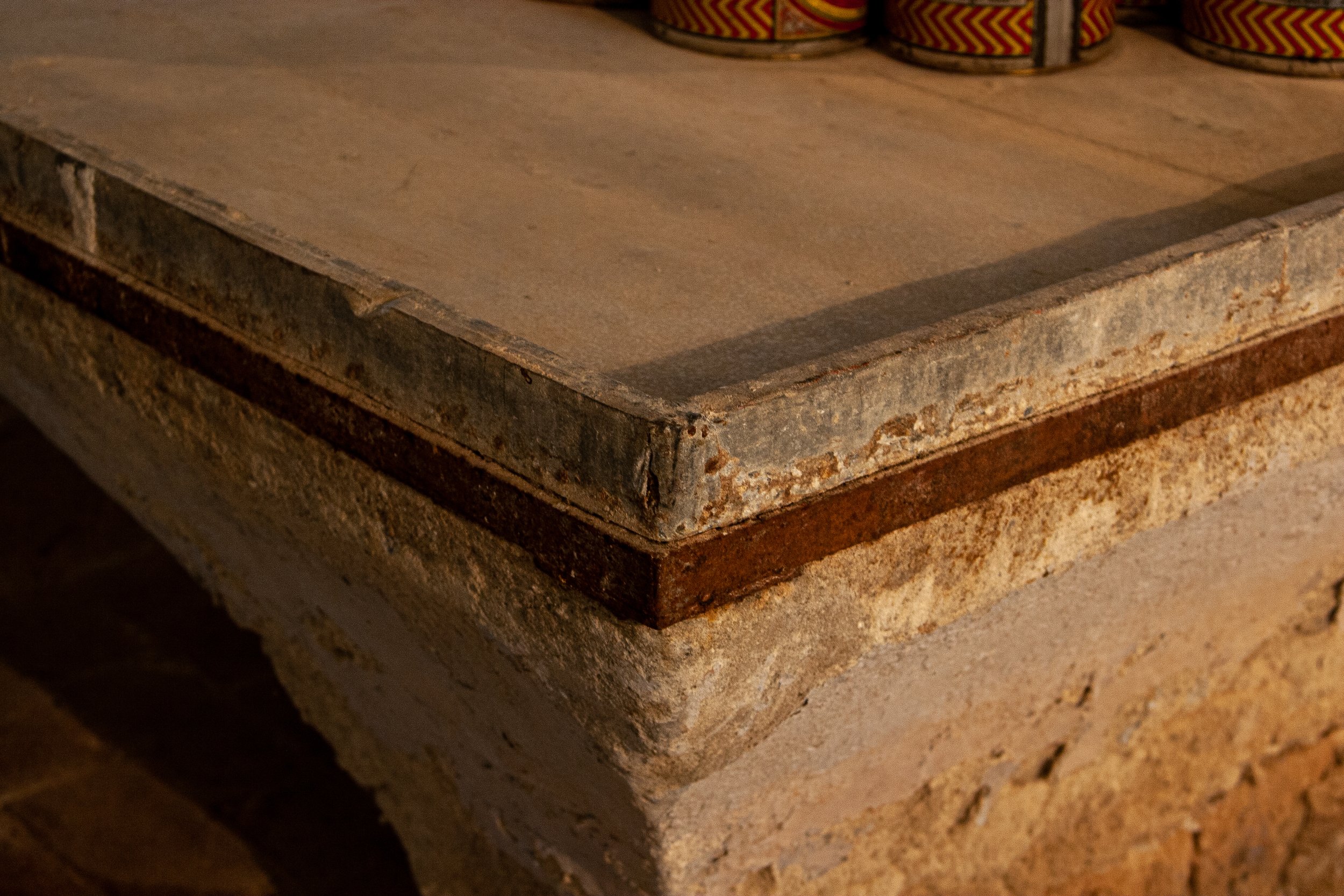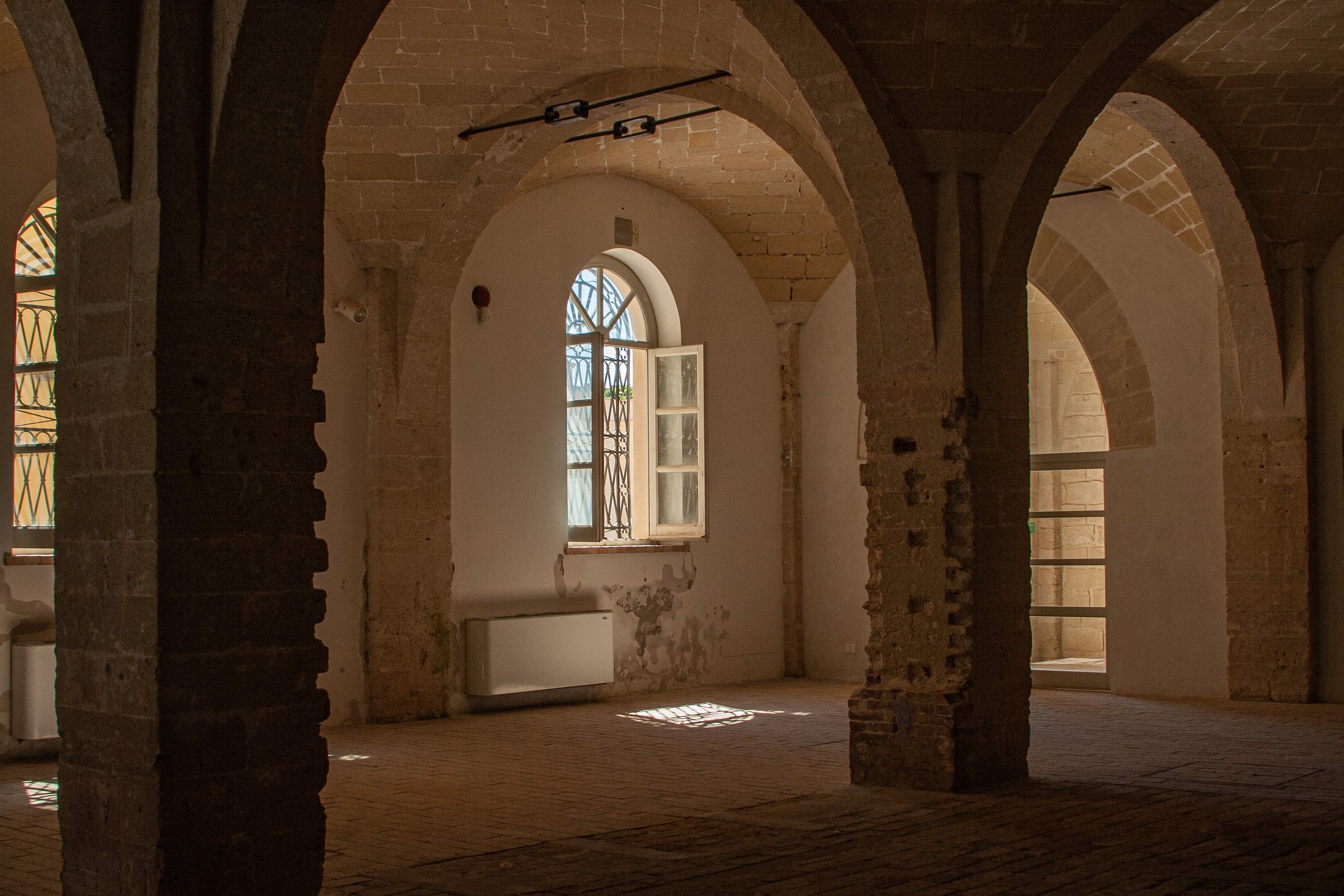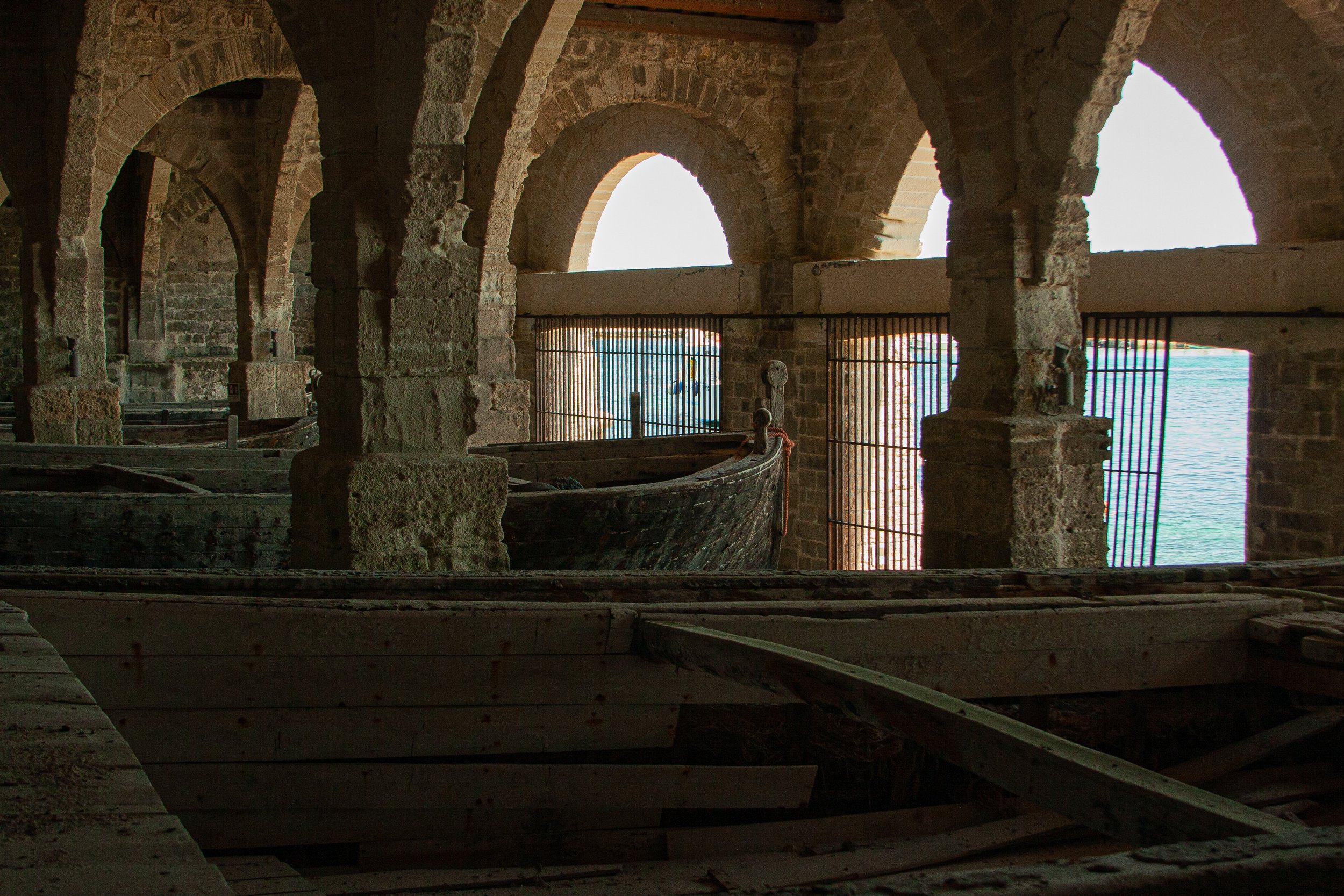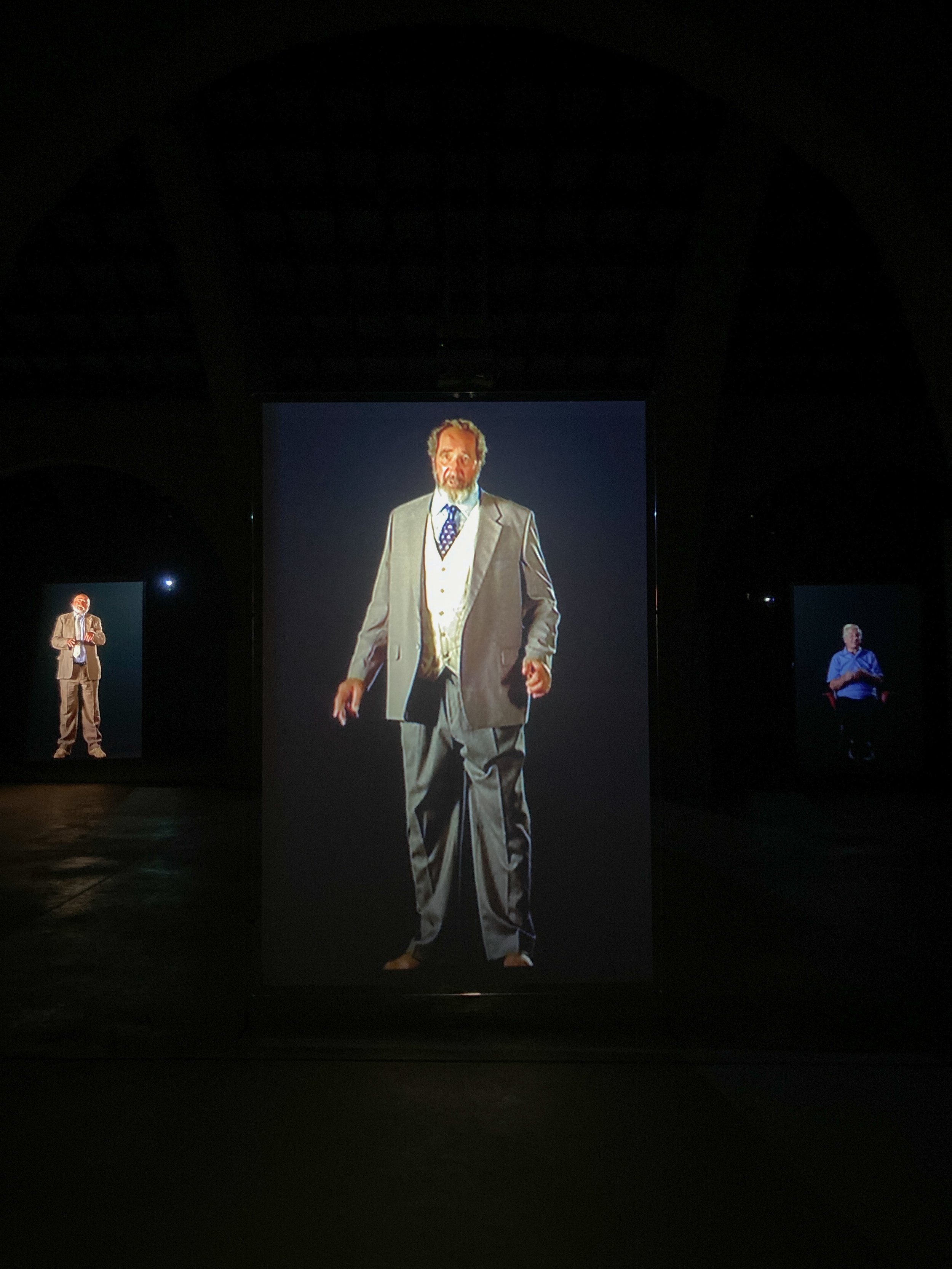Mapping Memory: The Reuse of Sicily’s Tuna Fisheries, Part 3
This is the third installment of a three-part series. Follow the links to read Part 1 and Part 2.
Tuna fishing has long been an important part of Sicily’s cultural and industrial heritage. The island’s tuna fisheries, or tonnare, embody the rich history and material culture of tuna fishing as it was practiced until the mid-twentieth century. The tonnare also have a transcontinental significance, sharing an architectural lineage with agricultural compounds across southern Italy as well as Spanish haciendas in the New World.
The Sicilian tuna fishing industry folded in the 1950s, due to the dwindling population of tuna and competition from operations elsewhere employing modernized techniques. For decades, the tonnare lay abandoned. Yet recently, many have been adapted for contemporary cultural, commercial, and hospitality uses. Tonnare across the island have transformed into event venues, resorts, and museums.
While there is substantial scholarship within Italy on the architectural and cultural value of the tonnare, few historians have studied the reuse of these buildings.[1] This article examines this phenomenon, in particular the ways in which Sicily’s tuna fisheries have been reinserted into everyday life. It explores the meanings that the fisheries in their adapted forms hold for their communities, along with larger questions about former landscapes of production and how we can incorporate them into the contemporary urban fabric.
Last summer, I traveled to Sicily to document nine fisheries across Sicily and evaluate their reuse. The case studies vary in condition and function: the Tonnara di Bordonaro, for example, is now a high-end bar and bed and breakfast. The Tonnara di Favignana is a celebrated maritime museum. In this article, I focus on three sites: Favignana and the Tonnaras di Marzamemi and di Scopello (Figure 1).
Figure 1. A map of the nine tonnare I visited. The three discussed in this article are the Tonnara di Marzamemi, the Tonnara di Scopello, and the Tonnara di Favignana. Drawing by G. Vaccarino Gearty, 2023.
An hour from Siracusa (Syracuse) in southeastern Sicily, the Tonnara di Marzamemi is considered by many to be the crown jewel of the eastern fisheries, due to its size and overall historic success (Figures 2–6). Though it originated in the twelfth century, the structures remaining today were built starting in 1626. This site is a unique example of the fishery as a generator of urbanism and local culture. Once the dominant site in a small fishing village, the tonnara has transformed into a cultural and commercial center, attracting tourists and locals.
As the largest fishery in the southeast, the Tonnara di Marzamemi has a monumentality that is difficult to miss. The main factory complex consists of the Palazzo Villadorata, the eighteenth-century proprietor’s residence, and the Loggia, the main production hall (Figures 7-10). While the palazzo has been renovated as a luxury rental apartment and is closed to the public, the Loggia is open for tours and private events like weddings. The interior recalls a cathedral, with massive reinforcements, archways, and huge doors. Piazza Margherita — the heart of the tonnara — is a vibrant social space, particularly on hot summer nights. On the evenings I visited, it was dense with families, couples, and groups of friends. A lively assortment of restaurants, bars, and small shops occupy converted fishermen’s housing around it.
Parts of the tonnara are still in ruins; the future of these portions is uncertain (Figure 11). There are rumors that community leaders are considering renovating it as a shopping center. That would be a shame. Given the fishery’s current set of commercial uses, other, more community-oriented programs seem necessary. Still, the Tonnara di Marzamemi is a successful example of integrating post-productive landscapes into a contemporary urban fabric defined more by consumption.
The Tonnara di Scopello, in the western province of Trapani, is, by contrast, more rural (Figures 12–15). Thanks in part to its isolation and beautiful location, it has been adapted into a seaside resort — and with great success. After paying a €25 entrance fee, I made my way down a steep descent to the tonnara. The former proprietor’s residence, a pink palazzo at the center of the complex, now contains hotel rooms and a small bar. Like at Marzamemi, much of the compound is closed to the public, unless one is a hotel guest or pays for a guided tour.
Like other fisheries, this tonnara has an internal courtyard. Scopello’s, though, is smaller in scale, and more intimate in feeling, than most (Figures 16-20). As I wandered around this piazza, marveling at the fishermen’s chapel, the proprietor’s palazzo, and the low stone buildings surrounding it, I was charmed by the picturesque beauty of it all. The buildings had clearly been constructed with care and aesthetics in mind. Still, it was sobering to remember that this environment would have felt very different as an active fishery. On one side of the courtyard, workers would have been chopping off the heads of the massive tuna and hanging the corpses up to desanguinate; the smell would have been horrible. On the other, fishermen would have been mending nets, unloading tools, or waterproofing boats. Sterilized today, it is difficult to grasp how bustling it once was.
Not all connections to the productive past have been erased. The current owners have outfitted many of the former storage spaces as an anthropological exhibit on traditional fishing practices (Figure 21). Here, tour guides described the tools the fishermen used, such as special harpoons, axes, and artisanal “water goggles” that designated “spotters” used to determine when the tuna were entering the fishing nets. One entire storage hall still contains fishing nets, last used in the 1960s. Still, there is something incongruous about this acknowledgement of the past. Museums and resorts do not, a rule, mix.
Scopello raises questions about Sicilians’ vision for preserving the sites and traditions associated with tuna fishing. These complexes are helping to rejuvenate depressed local economies. But does transforming them into centers for tourism diminish the profound significance that the fishing industry holds for locals? Are there better uses?
“As production centers around the world become increasingly obsolete, how can we incorporate them into the contemporary urban fabric?”
The last stop on my expedition was the Tonnara di Favignana, on the small island of Favignana off the coast of Trapani (Figures 22-23). Even more so than Marzamemi, it is considered the flagship of all of Sicily’s tonnare: it was the largest and most successful, employing at one point as many as eight hundred people. It’s located on one side of Favignana’s once busy port, and has a considerable footprint. Established in 1640, most of the complex that stands today was renovated in 1874 by Giuseppe Damiani de Almeyda, a prominent Sicilian architect. Of all the island’s fisheries, this one also closed most recently, in 2007. Soon afterwards, it was converted entirely into a museum.
Stepping into a monumental, tree-lined courtyard at the entry, I was struck by how well preserved the tonnara is (Figure 24). That feeling intensified as I moved through the exhibition spaces, all of which were once canning and storage facilities. Many original features remained, including canning tables, which have a raised lip on the edge to prevent oil spillage. Once bustling with workers and machinery, these vaulted interiors, with simple notched column capitals, felt peaceful and elegant.
As a public history museum, however, Tonnara di Favignana also tells a social and economic history. One large hall displays original tuna cans (including massive, ten-pound containers!) Another is set up with video screens, upon which are projected interviews with former fishermen and factory workers, including women. Many of the subjects recall with longing their experiences working at the tonnara, and the fishing community that they had been a part of (Figures 25-32). Its only in recent years that Favignana has had to pivot away from fishing to tourism, and the sense of loss feels fresh.
Documenting Sicily’s tonnare has allowed me to bring them into a global conversation about adaptive reuse and the politics, and ethics, of heritage preservation. These extraordinary buildings remain powerful reminders of a past way of life that many people still feel connected to. But it’s troubling how many have been transformed into resorts and other spaces with steep prices of entry. To bring buildings back to life in ways that engage with the past while also looking to the future (and that generate enough revenue for upkeep) is not simple. There are many approaches. The most meaningful and effective ones, though, maximize community involvement and access.
Citation
Giuliana Vaccarino Gearty, “Mapping Memory: The Reuse of Sicily’s Tuna Fisheries, Part 3,” PLATFORM, 26 June 2023.
Notes
[1] Salient scholarship on Sicily’s tonnare, all in Italian, includes Vincenzo Consolo, La Pesca del Tonno in Sicilia (Palermo: Enzo Sellerio editore, 1987); Federico Fazio, I Luoghi del Tonno: Santa Panagia e le tonnare della Sicilia sud-orientale (Siracusa: LetteraVentidue Edizioni, 2021); and Salvo Sorbello, La Pesca del Tonno nel Capolinea del Sud: Le tonnare di Vendicari, Marzamemi, e Portopalo di Capo Passero (Siracusa: Emanuele Romeo Editore, 2010).

